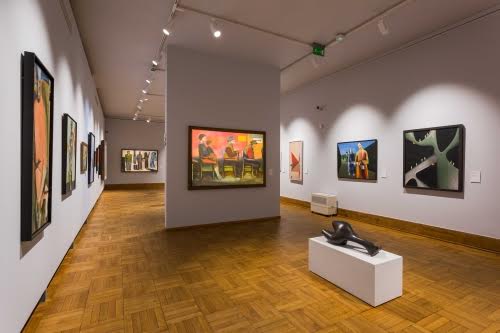The Warsaw National Museum in Poland has joined the ranks of art museums around the world who are choosing LED for their display lighting. Along with institutions such as the Louvre, the WNM has chosen to upgrade their fixtures to all LED luminaires with no exceptions.
The WNM is a safe haven for more than 800,000 historical works of art by Polish and European artists, with items dating back as far as the 8th century. These delicate pieces require precise conditions if they are to be maintained and preserved, including minimized exposure to light and UV rays. The directors of the WNM’s primary goals for the lighting upgrade were to employ state-of-the-art preservation techniques, bring out the best qualities of the pieces with the highest possible light quality, and reduce their carbon footprint by minimizing electrical energy use.
The museum has opted to use Zumtobel’s Arcos LED spotlights, which can be easily re-configured to suit any changes in the exhibits. The fixtures have been modified with Tunable White technology. Based on PI LED technology developed by Lumitech, co-marketed by Tridonic, the Tunable White technology allows LEDs to efficiently produce the full spectrum of white light via a combination of blue LEDs with green-tinted phosphor, red LEDs and blue LEDs. An integrated DALI (digitally addressable lighting interface) controller system can adjust the color temperature of the light as needed, or each lamp can be adjusted by hand.
The LED fixtures give curators an element of control they did not previously have. Fixtures can be individually adjusted to bring out the best of each piece, such as a warmer white light to bring out the golden undertones of a medieval painting. The WNM, unlike other museums, uses almost no natural light from the outside. The upgraded LED fixtures provide maximum illumination without the damaging effects of UV rays and, during certain hours, are operated by proximity sensors so that light exposure as well as energy use is minimized.
So far, the museum has renovated five main galleries, equating to a 40% reduction in energy use. The total reduction in energy load is expected to be from 110,000W down to 22,400W, representing a decrease of 80%. Developments in LED technology continue to make them the best energy efficient lighting option. With accoutrements like wireless controls and precision color rendering, it is likely that LED will continue to take over in applications such as museums where presentation is key.




